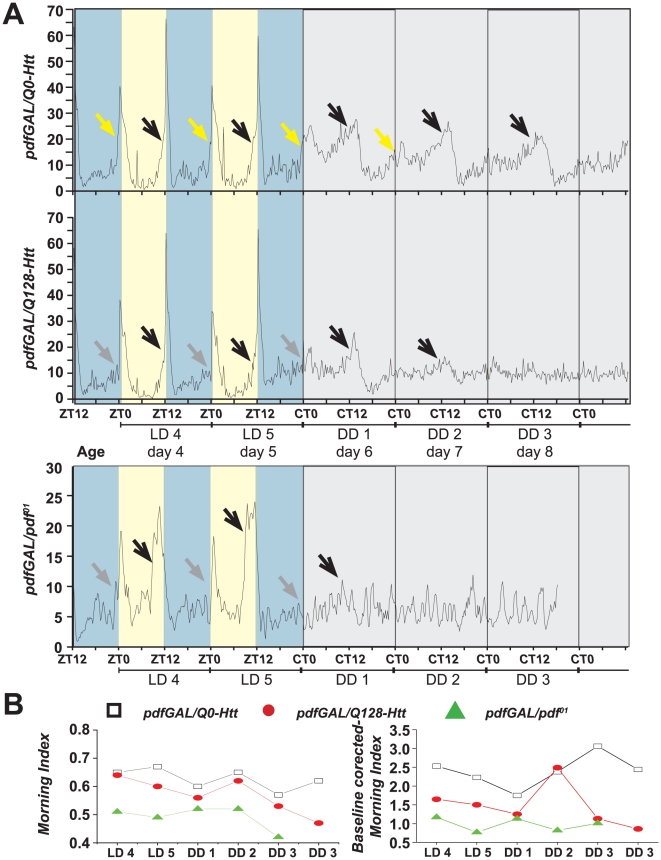Figure 6. Functional loss of small LNv causes retention of morning anticipation in light-dark cycles, but rapid loss of the circadian-dependent morning peak behavioral activity in constant darkness.
(A) Mean activity of flies during the transition from LD12 h∶12 h (day 4 and 5; yellow shaded area represents light phase and blue shaded area represents dark phase) to DD (beginning on day 6; grey shaded area) is shown for control flies (pdf/Q0-Htt top panel; averaged across all flies that were rhythmic in DD and smoothed by a moving average of 45 mins - i.e., three consecutive 15 min bins) flies lacking sLNv (pdf/Q128-Htt second panel; averaged across all flies that were arrhythmic in DD and smoothed) and pdfGAL/pdf01controls (bottom panel). Under LD12 h∶12 h both genotypes show robust anticipation of morning (yellow arrow) and evening (black arrow). In control flies the morning peak is clear for at least the first two days in DD along with a persistent robust evening peak. (B) Quantification of morning anticipation activity in LD and first 3 days of DD on data averaged across flies and smoothed across 45 mins. Left panel shows morning anticipation activity index measured as the ratio between activity levels 3 hrs compared to 6 hours preceding lights ON (Harrisingh et al 2007) while right panel shows normalized or baseline-corrected index of morning activity estimated as ratio between the activity levels in the 1 hour preceding lights ON normalized by activity levels at midnight preceding that transition.

